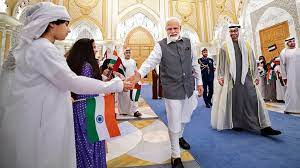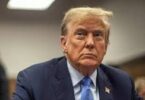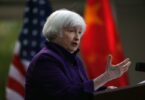India and United Arab Emirates (UAE) have recently signed agreements for the use of local currencies for bilateral trade and to set up a real-time payment link to facilitate easier cross-border money transfers. According to the details, the development came during a visit by India’s Prime Minister Narendra Modi to the UAE wherein the two countries agreed to set up a real-time payment link to facilitate easier cross-border money transfers. As said, the agreement will allow India to settle trade in rupees instead of dollars, boosting New Delhi’s efforts to cut transaction costs by eliminating dollar conversions. At the same time, the establishment of a framework for the use of local currencies for transactions between India and the UAE, aims to put in place a Local Currency Settlement System (LCSS) to promote the use of INR and AED bilaterally and foster greater economic cooperation between the two nations.
The trend of dollar disgrace and de-dollarizstion of bilateral trade and funds transfer is on the rise while Washington close ally India is on the forefront of this campaign that has disastrous and unhealing effects on the US economy. In fact, multiple geopolitical and economic reasons has accelerated the global trend of de-dollarization among the countries from anti-US bloc ranging from Brazil to China and Malysia to Central African Republics, yet New Delhi was one of the prominent pro-west nation that is actively playing on both sides of the court. Modi regime tactfully enjoying blessings attached with US dollar on one hand and championing the global drive to reduce economic reliance on US greenback by striking deals with several Asian economies including UAE, Malysia, Iran, Sri Lanka, Russia, China and others to trade in local currencies.
The bilateral trade between the United Arab Emirates (UAE) and India was around $84.5 billion in the year from April 2022 to March 2023 that will take a big push after recent trade agreement between the two countries. According to the Central Bank of India, the agreement covers all current account transactions and permitted capital account transactions, while the creation of the LCSS would enable exporters and importers to invoice and pay in their respective domestic currencies, which in turn would enable the development of an INR-AED foreign exchange market. This arrangement would be great set back to US dollar monoply in the real sense.
Currently, the ongoing de-dollarization trend will change global economic dynamics and will benefit local currencies in a number of ways besides cutting reliance on dollar it would balance the trade risks, stabilized the local currencies, lower the costs of payment, reduce settlement time, boost sales and increase revenue along with reducing the risk of assets freeze by the western bloc in case of conflict of interest in the future. Presently, Euro and Japanese yen had moved to settlement in local money while the Association of the South East Asian Nations (ASEAN) policy makers are mulling to setup Asian Monetray Fund as an alternative to IMF and move to trade in local currencies with in the bloc. Meanwhile, Saudi Arabia, the world largest producer of black gold has signalled it’s openness to trade oil deals in foreign currencies other than US dollar that will further accelerate the de-dollarization trend in the world.
Interestingly, the US dollar suffered a stunning collapse in recent years as reserve currency because of it’s mascular use by the US government. Multiple countries are rapidly adondening dollar as trade currency and Chinese Yuan is swiftly replacing US dollar as global trade coin in the world. The traditional US ally India joined China in promoting Indian rupee as an alternative to US dollar. Interestingly, New Delhi not only freeing it’s trade from greenback influence but collaborating with Moscow and Beijing to constitute an alternative to the Society for Worldwide Interbank Financial Telecommunications (SWIFT) that will enable India to trade unhinderedly with the Countries facing US sanctions.
Currently, New Delhi enjoys strategic economic and defense partnerships with the United States, it has cardinal relations with Moscow, a souring diplomatic ties and good working trade relations with Beijing. Interestingly, India has no confidence in it’s western allies and preparing to join Moscow’s SOFS and Beijing’s CIPS financial systems to bypass western financial mechanism in case of any awkward situations in the future. Although, India claims close friendship with the US, however, world wonders which kind of alliance Narendra Modi brands which commences with bluff and concludes by stabing friend in the back.







